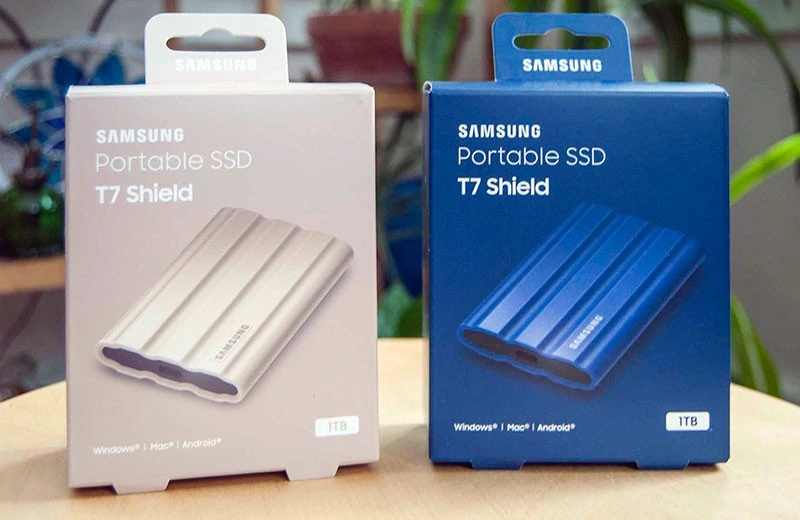The Samsung T7 Shield is a secure external SSD that is an improved and more reliable version of the T7. The model differs in protection against dust, rain and falls, although the warranty period remains the same, and the speed has not become higher.
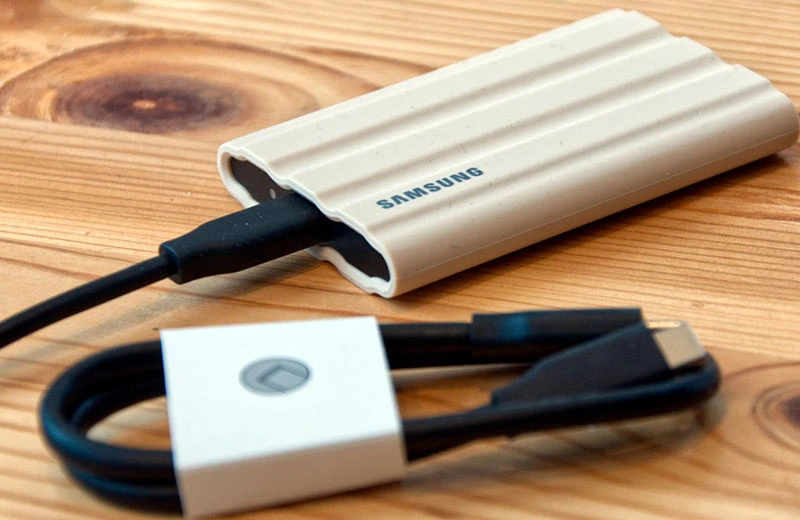
Contents
Review Summary of SAMSUNG T7 Shield
The Samsung T7 Shield is a minor improvement to the T7 line that adds an IP65 rating. In fact, the product is not bad, but not competitive enough. If sticking to Samsung as a brand isn't important to you, there are more affordable and better options out there.
Benefits
- Attractive design
- Two USB cables included
- Dust, water and drop protection
- Strong 256-bit data encryption
Disadvantages
- Overcharge
- Speed like T7 2020
- Available only for 1/2 TB variants
In 2020, Samsung released the T7 Touch, an SSD with biometric fingerprint security, and a few months later, a simpler version of an external drive appeared. The T7 Touch offered 10 Gigabit connectivity when read and write speeds reached 1000 MB/s.
Will the T7 Shield become popular, given that it is almost the same as the previous model in terms of characteristics?
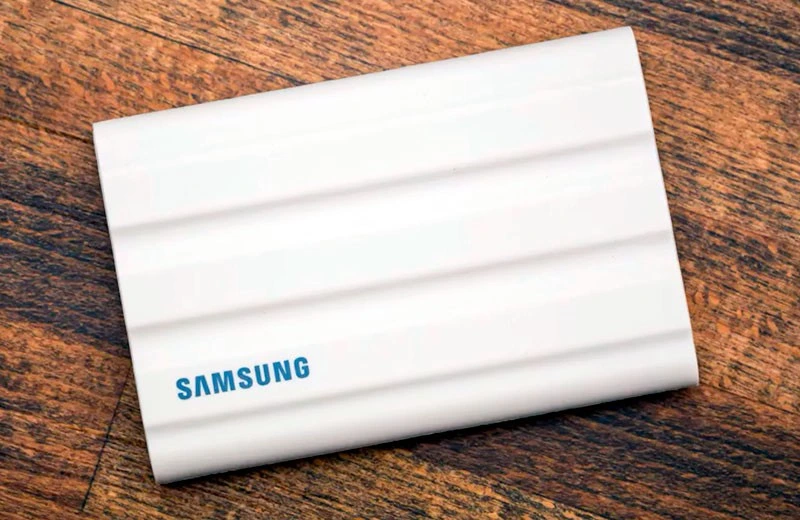
Specifications Samsung T7 Shield
| Capacity | 1/2 TB |
| Speed (read/write) | 1050/1000 MB/s |
| Interface | USB3.2 Gen2 |
| Encryption | AES 256 bit, password protected |
| UASP Protocol | Supported |
| Material | Plastic with rubber cover |
| Protection | IP65 against water and dust, drops from a height of up to 3 m |
| OS Compatibility | Windows, Mac, Android |
| Dimensions | 88×59×13mm |
| Weight | 98 g |
| Colors | Black, blue, beige |
| Price | $133 Approximately ₹11,999 |
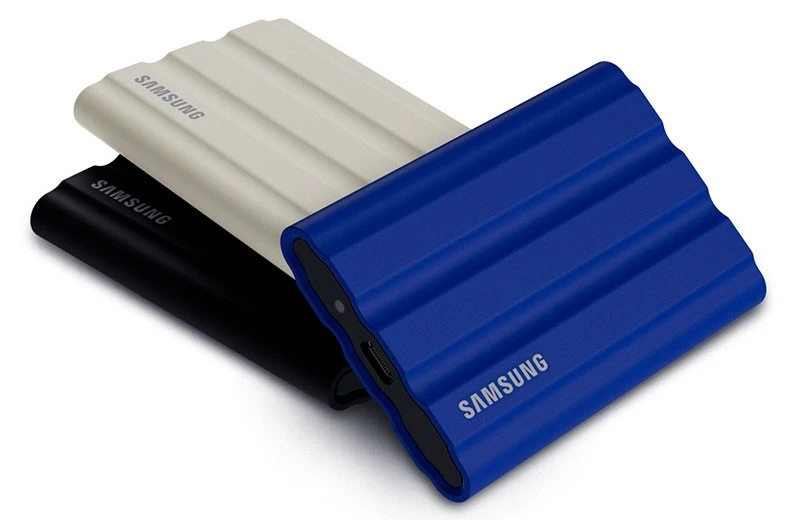
Design and construction
The design of the drive has changed markedly, Samsung has released the T7 Shield in three colors: black, blue and beige.
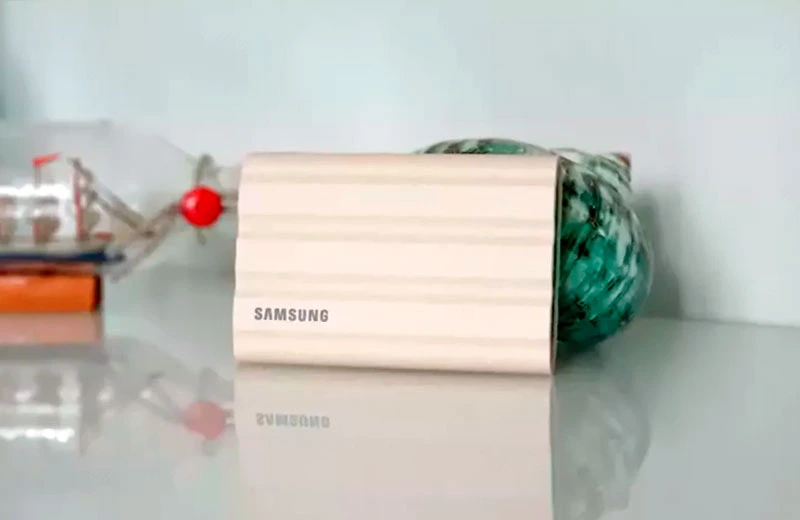
I can’t say anything special about the black and blue ones, but the beige version that came to me for testing resembles computer cases of the past and evokes nostalgic feelings. The case also has an unusual rubberized surface shaped like slate, which is very different from other modern SSDs with flat and pointed sides.
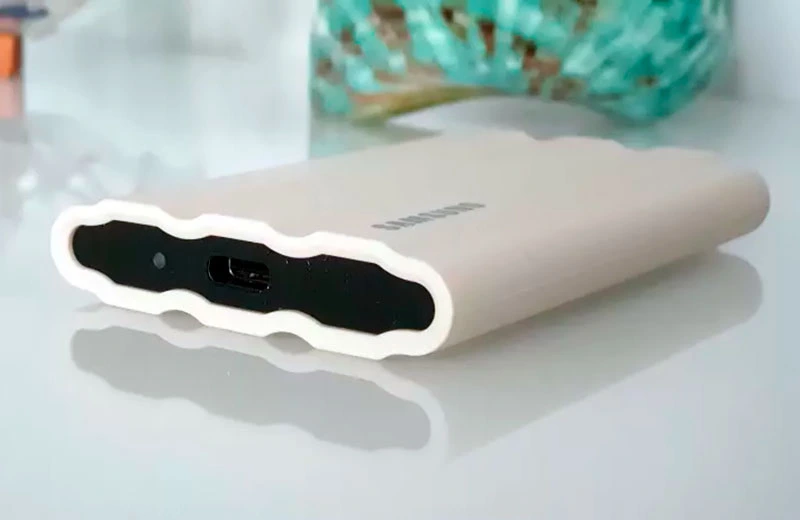
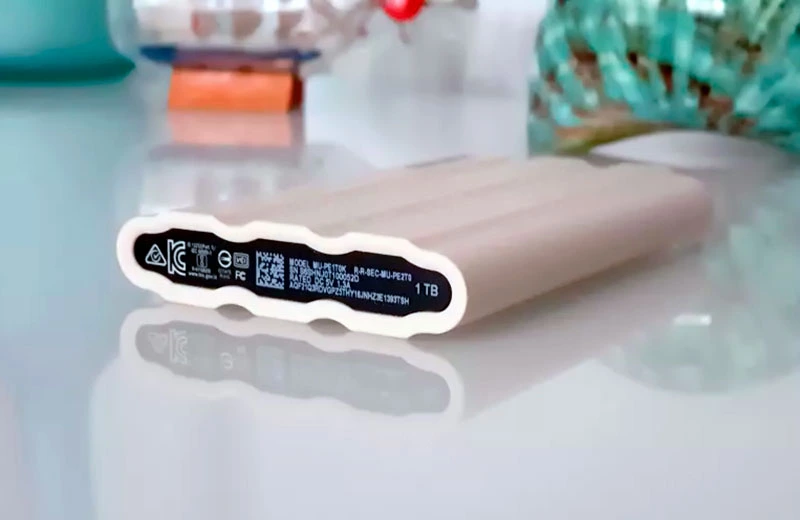
The Samsung logo is applied on one side, and the T7 Shield inscription on the other, in a small font. The capacity of the Samsung T7 Shield and other standardization icons can be found on the side in the shape of an ellipse. On the other hand, there is a USB-C port and a tiny LED that displays the current activity of the device.
The kit includes two cables with Type-A and Type-C standards. But, they are too easy to detach from the drive, so it’s easy to accidentally disconnect the SSD from the computer.
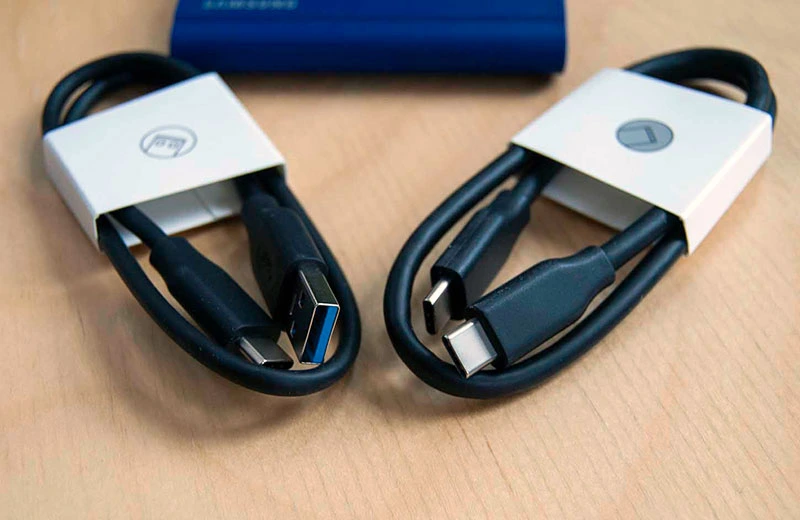
The key advantage of the Samsung T7 Shield compared to the regular T7 is the rugged housing.
Like many smartphones, this external drive has received IP65 certification against water and dust, and is also able to withstand drops from a height of three meters. The body of the regular T7 can withstand drops from up to two meters, so the new model is better protected from impacts.
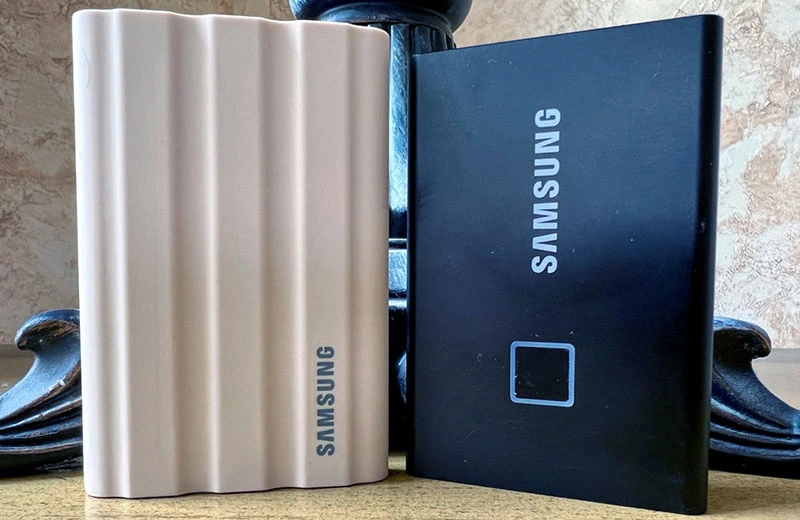
It is worth remembering that IP65 is an inferior protection against water, so you should not immerse the SSD under water. In addition, the warranty for the device is three years, like the previous model.
Interface and capacity
The USB connector standard is in a strange state right now – it’s stuck between the current version 3.0 and the upcoming 4.0.
It doesn’t help that the USB Developers Forum (USB-IF) renames well-known standards in a new way, which confuses many users. USB 3.0 evolved into USB 3.1 Gen 1 and then into USB 3.2 Gen 1. Before USB 4.0, USB 3.2 Gen 2×2 with 20 Gb/s bandwidth like Thunderbolt 3/4 will remain the best technology.
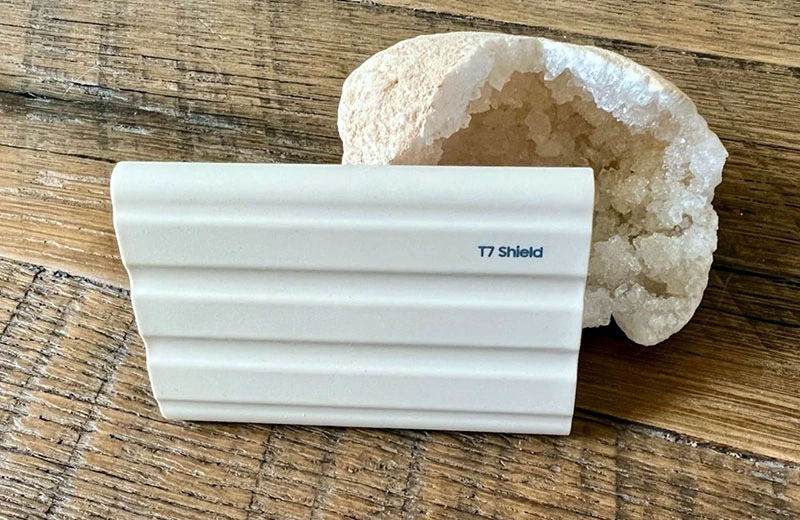
Unfortunately, the T7 Shield port is a Gen 2 standard with a maximum speed of up to 10 Gb / s, like the previous model. On the other hand, there are not so many computers that support Gen 2x2 yet.
There are two versions of the Samsung T7 Shield external drive on sale: with a capacity of 1 or 2 TB. The 500 GB option disappeared when Samsung stopped releasing the 4 TB. This is strange, because there are already many competitive models on the market with 4 TB and even 8 TB.
Data and software protection
Another advantage Samsung’s T7 Shield has over other external drives is AES 256-bit encryption to protect data, just like the T7.
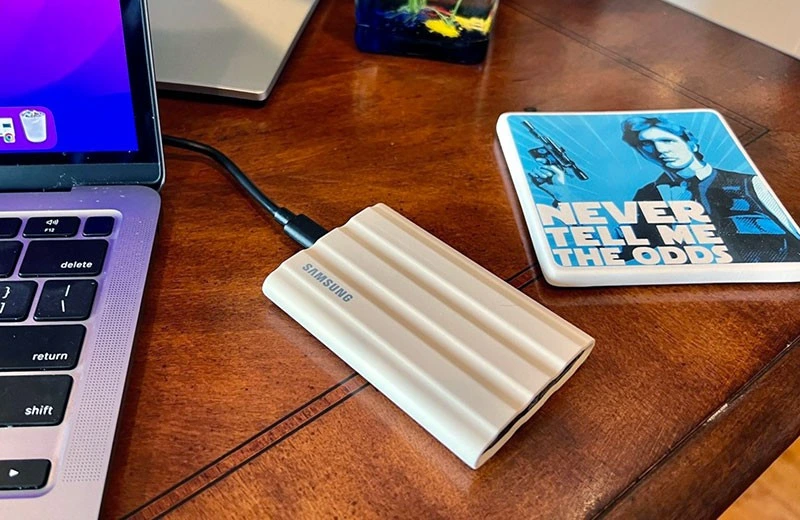
To access the contents of the drive, you will need a password and the necessary software on your PC. After encryption, access to information without knowing the password cannot be obtained in any other way.
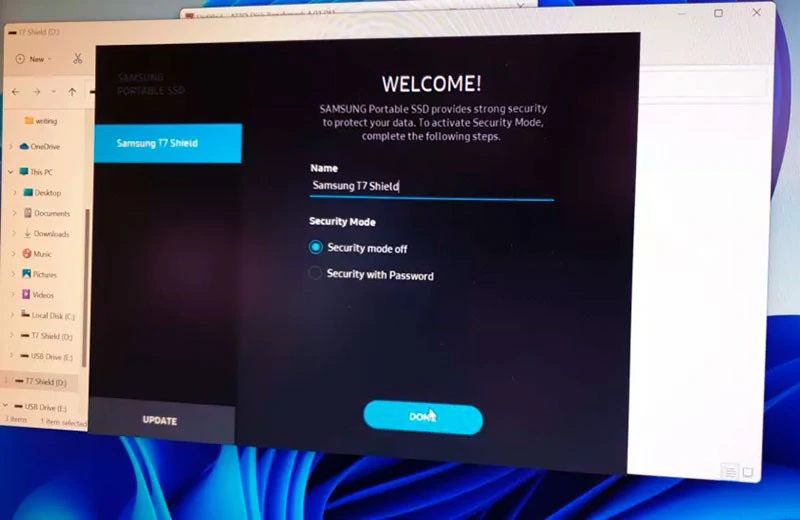
For owners, the Samsung Portable SSD program is available, where hardware encryption is activated, or firmware updates are made.
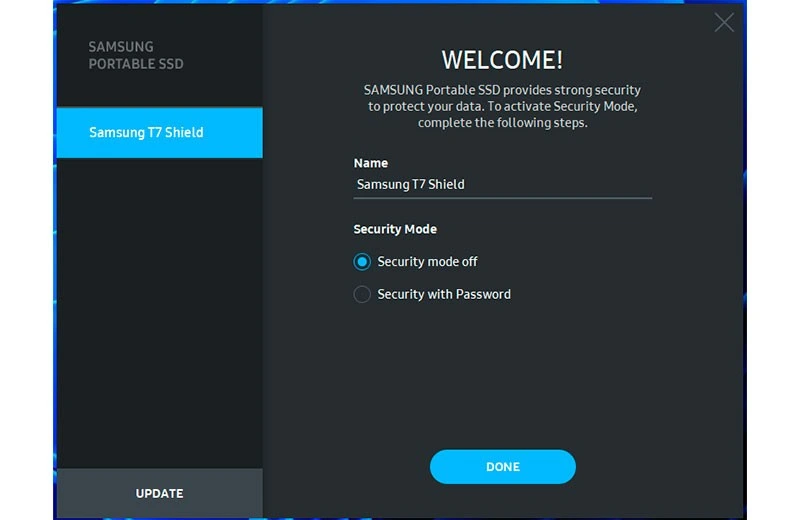
Performance and Speed
The technologies behind the T7 Shield are the same as those used in the T7, so the data transfer speed of the new SSD has not changed.
In tests, the new Samsung T7 Shield is no different from most external SSDs from competitors using the Gen 2 standard. CrystalDiskMark 8.0.4 shows a read speed of 1085 MB / s and a write speed of 1029 MB / s. However, in Real World mode, the figures drop to 799 MB/s and 911 MB/s, respectively.
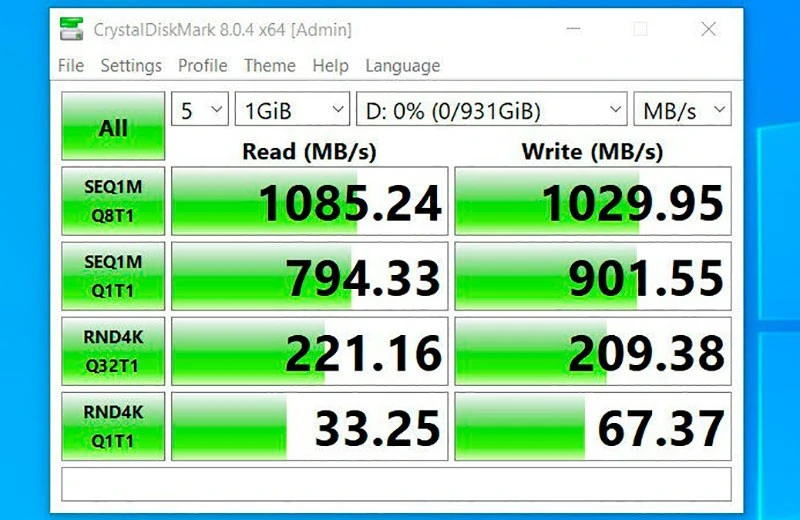
However, my tests have shown that the read speed remains stable, but the write speed sometimes fluctuates a lot, even for a short period of time.
This behavior indicates that the drive’s write cache is relatively small. When overflowing, the speed decreases to about 600 MB / s, and then returns to the maximum values.
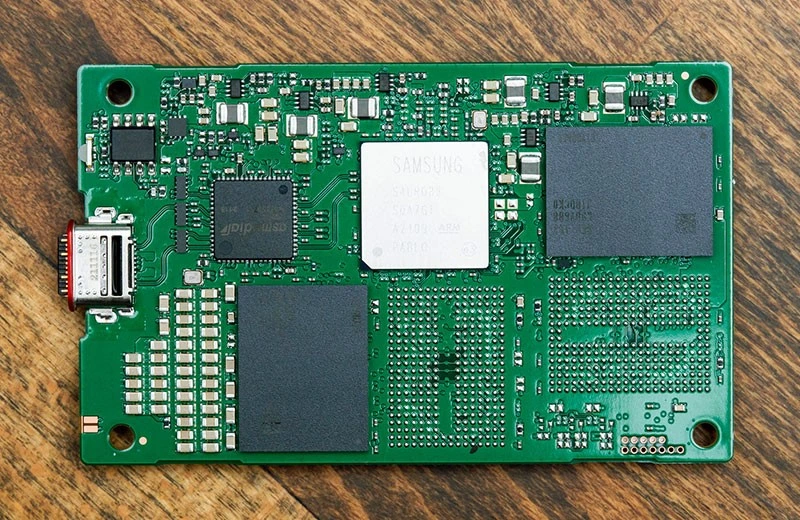
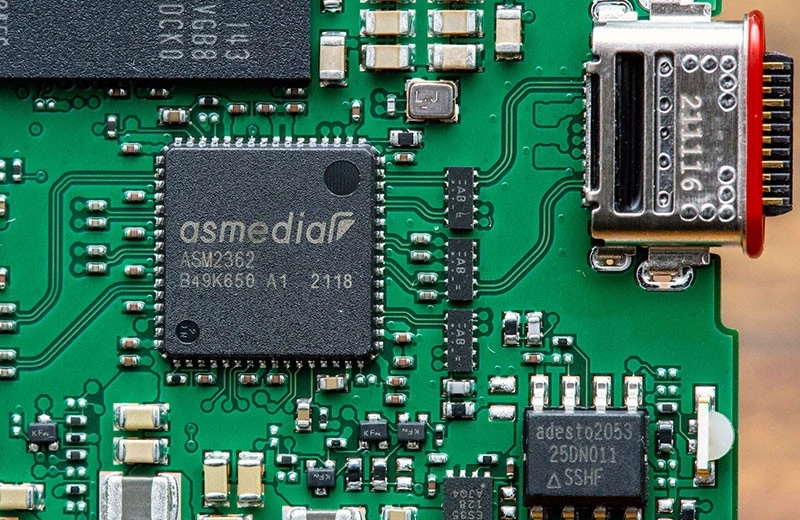
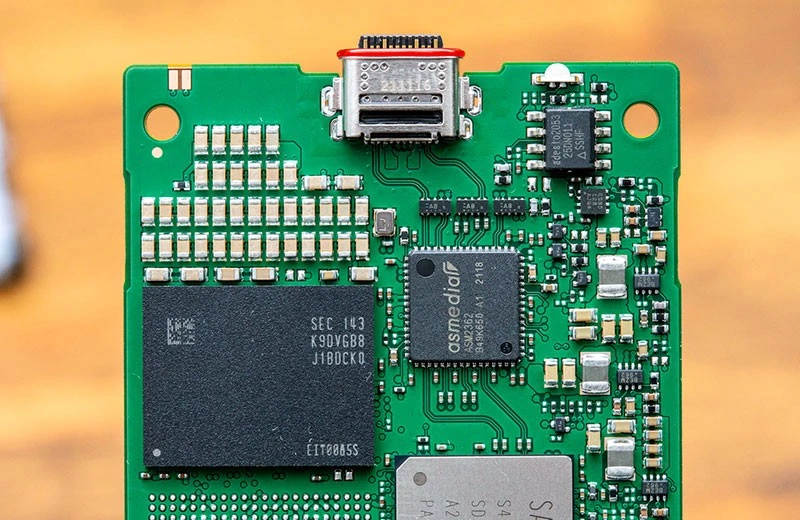
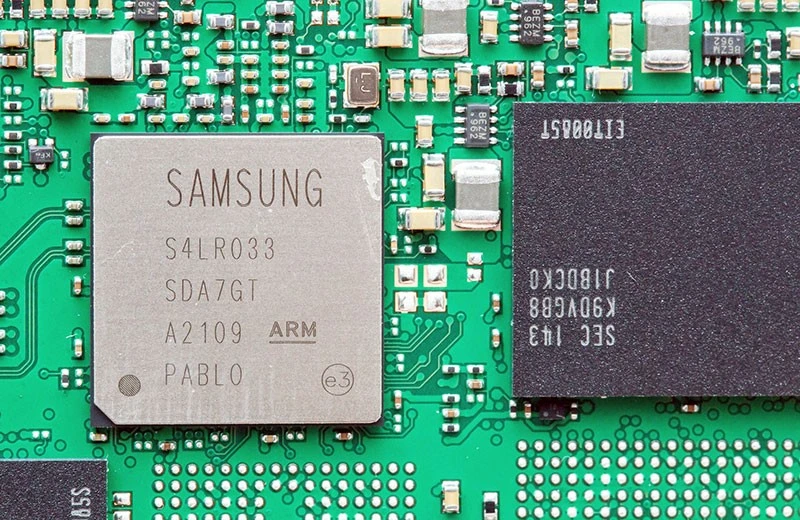
In general, the speed of the Samsung T7 Shield is acceptable, as for a drive with a Gen 2 connector. But it did not become higher than the T7 released in 2020, and slower than any SSD with the Gen 2 × 2 standard.
Samsung T7 Shield Alternatives
The Sandisk Extreme Portable SSD matches the T7 Shield when it comes to performance and capacity. Although it is significantly larger, you will have a carabiner and the option to buy a 4TB model.

The Adata SE800 is one of the most underrated external SSDs out there. This is a fully waterproof model (IP68) that outperforms all competitors in terms of value for money per 1TB.
The Kingston XS2000 case is IP55 protected, but the drive comes with a longer warranty, lower price. It’s much faster than the T7 Shield, with the added benefit of USB 3.2 Gen2x2.
Read Also: Samsung The Freestyle review: a compact DLP projector for multimedia anywhere
Outcome
To be honest, after two years of hiatus, more was expected from the Samsung T7 Shield.
Of course, you can’t blame Samsung for problems with the development of the USB standard, because the relatively low read and write speeds are due to the USB 3.2 Gen 2 interface. However, if the Korean company wants to compete with the best SSDs on the market, Gen 2 × 2 support had to be added.
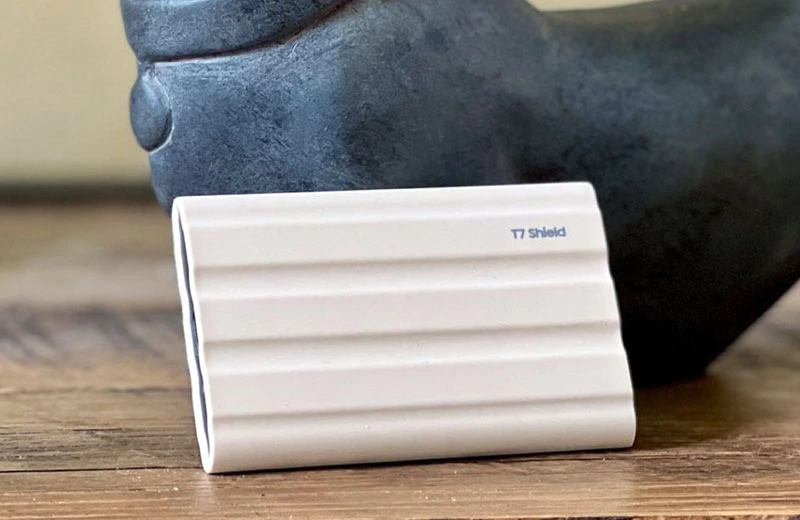
Instead, we got the T7 model from two years ago, which costs more and differs only in a more protected case. Yes, protection from dust, splashes and drops is important in many situations, but it is unlikely that the T7 Shiled will become a popular choice with buyers.
Is it worth buying
With many external drives from competitors with faster Gen 2×2 interfaces, the Samsung T7 Shield is only worth buying for those who often risk breaking their SSD.

